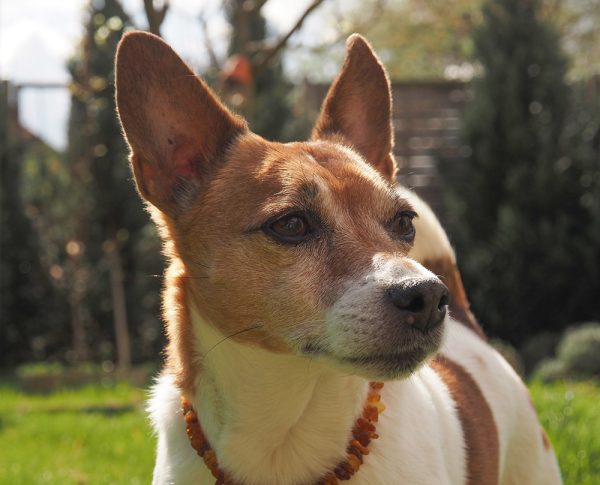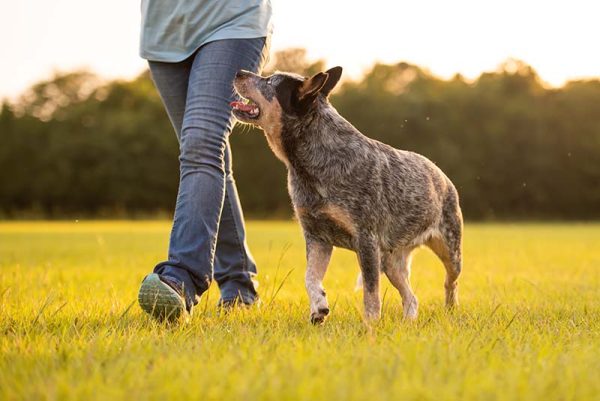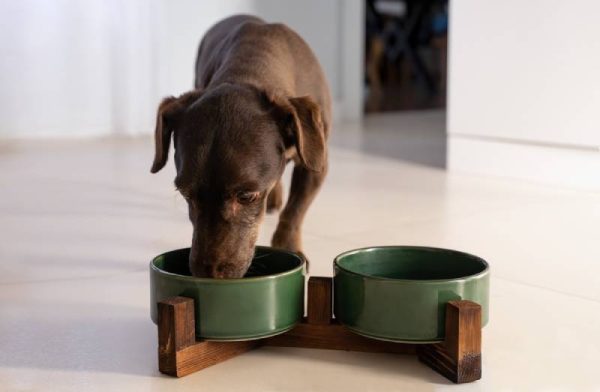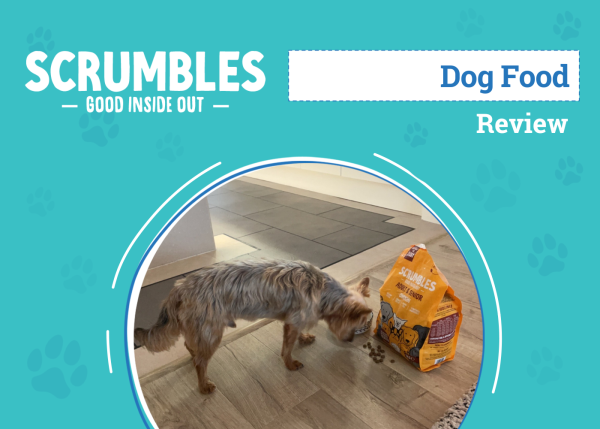In this article
View 2 More +From their unmistakable look to their endearing personalities, Chihuahuas are a breed that most owners will tell you are in a class of their own. They’re perky, loyal, and pleasantly trainable, with an oversized confidence that makes their habits all the more delightful. Adding to the fun are their tendencies toward off-beat behaviors, including their strange desire to burrow.
While burrowing isn’t unique to Chihuahuas, the breed is more likely to dig into bedding and other materials when the mood strikes. If you’ve been wondering how to manage your dog’s unexpected urge, we’ll explain why Chihuahuas burrow and how you can ensure their safety.

The 5 Reasons Why Chihuahuas Burrow
Generally, burrowing is a denning habit common to dogs. Their wild ancestors needed safe homes to sleep and raise their young. By taking up shelter in caves, tunnels, and other den spaces, they could escape predators and harsh weather and ensure their survival.
Many dogs burrow due to their ancestral nature. For instance, many Terriers and Dachshunds dig and burrow because they once worked to flush vermin and game from underground havens.
Meanwhile, Arctic breeds like Huskies and Malamutes would dig holes in the snow or earth to keep warm or cool as the weather required. Although most modern breeds are companion animals in the home, those traits are ever-present and cause many pets to retain their digging and burrowing habits.
With these inherited habits in mind, we might see the Chihuahua as an outlier among dogs that like to burrow. They didn’t endure harsh winters, so we can’t use that straightforward explanation for the behavior. So, why do these long-time pet dogs enjoy burrowing?

1. Stress and Anxiety
Like any dog, Chihuahuas can feel stress for several reasons. Some experience separation anxiety, while others fear environmental stressors like fireworks, unfamiliar people, or honking cars. Despite their boldness, the Chihuahua’s small size makes them especially vulnerable and more likely to seek shelter and security by covering up in a blanket, a rug, or a pile of clothes.
2. Warmth
Hailing from Mexico, Chihuahuas are well-adapted to hot weather that would keep many northern breeds from thriving. Their bodies dissipate heat efficiently. Short-haired Chis have less hair to insulate them, and even those with wispy, long hair can keep cool effortlessly. The coat works with the dog’s small frame, low body weight, minimal fat, and rapid metabolism to quickly void heat and manage high temperatures.
Outside consistently hot regions, Chihuahuas are understandably more prone to the chills than the average dog. A shivering Chi will look for ways to warm up. When the weather cools (or someone fiddles with the A/C), it isn’t uncommon for them to burrow into a blanket to stay comfortable.
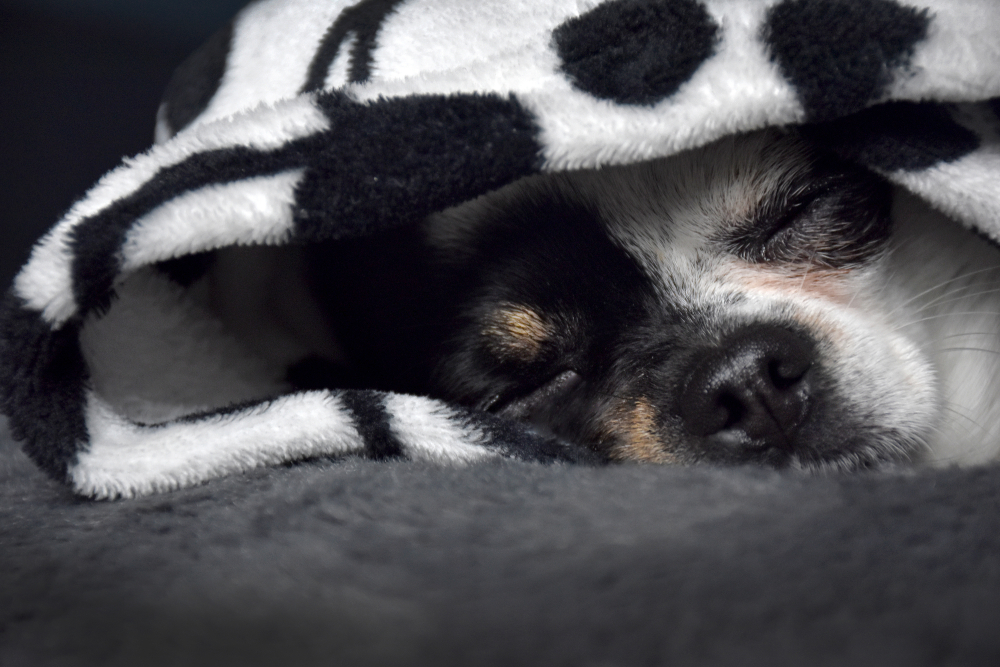
3. Comfort and Relaxation
After a long day, some Chihuahuas may burrow for simple comfort and much-needed rest. Covering up in a soft, cozy den keeps them safe and promotes relaxation. Meanwhile, it offers sensory deprivation, reducing noises and sights that might put them on the alert.
With a burrow in their owner’s blankets or clothes, they can wrap up in a familiar, soothing scent for an enhanced calming effect.
4. Recreation
Sometimes, dogs don’t need a reason to burrow other than having fun. Digging their way into a snuggly den is a form of recreation for domestic and wild animals, and your Chihuahua may do it for indoor enrichment.

5. Pregnancy
Pregnant Chihuahuas nearing the end of the gestation period will often burrow. They’ll gather blankets, clothes, papers, and more in an effort to create a safe space where they can give birth and care for their young.
Some females may have a false pregnancy (or pseudo-pregnancy) from hormonal changes. Nesting behaviors typically occur alongside other expected pregnancy signs, including lethargy, lactation, and nausea.
Fortunately, these changes resolve as hormones return to normal after a few weeks. If the issue persists, a vet may need to check your dog for underlying medical problems.

Is It Safe for Chihuahuas to Burrow?
Burrowing itself isn’t an issue for most Chihuahuas if you ensure they can do it safely. The causes behind it, though, should warrant attention, especially if it’s due to stress. Some ideas for resolving underlying anxiety that leads to burrowing behavior include:
- Setting a consistent routine
- Providing adequate daily exercise and indoor enrichment with toys, puzzle feeders, flirt poles, and other devices
- Daily training sessions and socialization
- Removing or limiting exposure to stressors
- Desensitization to stressful stimuli
- Providing a healthy diet and an appropriate feeding schedule
- Using dog-appeasing pheromone devices
When you’re having trouble managing severe stress, talk to your vet about possible medical issues and novel solutions.

How to Satisfy Your Chihuahua’s Need to Burrow
If your Chihuahua’s burrowing isn’t problematic and is little more than a way to get comfortable, feel free to support it with safe practices. There are several risks Chihuahuas face while burrowing.
Dogs can easily get lost under an excess of blankets, potentially heightening their stress and even causing breathing issues. For small Chihuahuas, a burrow in overly heavy materials like weighted blankets can be challenging to exit.
To safely let your Chihuahua burrow to their heart’s content, consider these helpful tips:
- Buy a burrow dog bed
- Use multiple small blankets in a pile rather than one large one, so your dog can burrow in and exit easily
- Restrict access to heated blankets and other hazardous burrowing materials
- Supervise your dog’s burrowing whenever possible
You can also assess why your dog burrows and look for more convenient solutions to satisfy them. If your dog primarily burrows to stay warm, you can outfit them with a cozy sweater to keep them comfortable wherever they go. For stressed Chihuahuas, an anxiety vest can provide gentle pressure that feels like a soothing hug.

Final Thoughts
Burrowing is one of the many quirks Chihuahua owners love about their dogs, and while it may seem unusual, it’s rarely anything to worry about. Monitor your dog’s behavior and the context in which they burrow, addressing habits that seem to be stress or health-related. Otherwise, take a few essential steps to ensure their safety, and let your Chihuahua satisfy their natural urge to burrow to their heart’s content.
Featured Image Credit: Jagodka, Shutterstock




